Menus

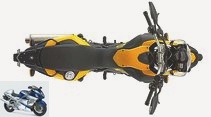
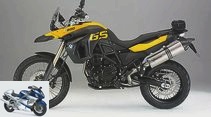
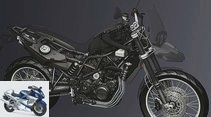
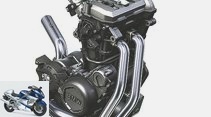
16 photos
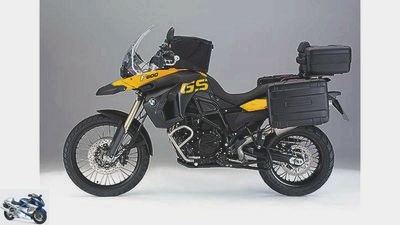
BMW
1/16
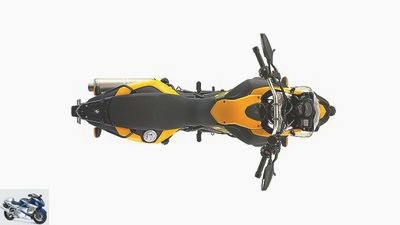
BMW
2/16
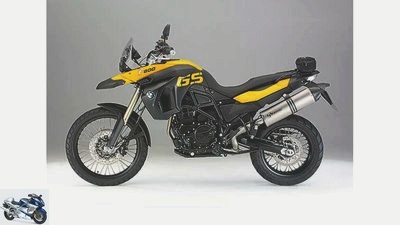
BMW
3/16
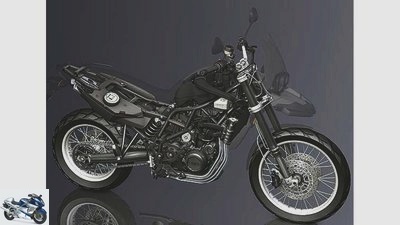
BMW
4/16
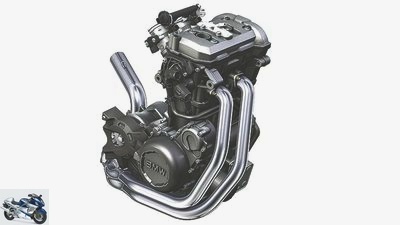
BMW
5/16
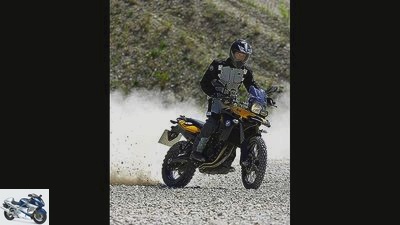
BMW
6/16
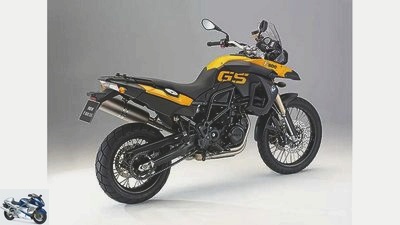
BMW
7/16
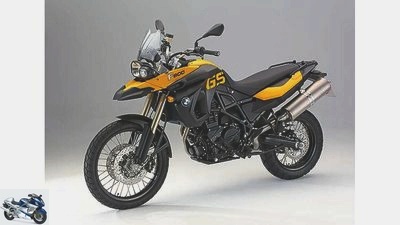
BMW
8/16

BMW
9/16
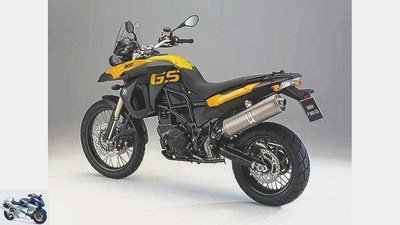
BMW
10/16
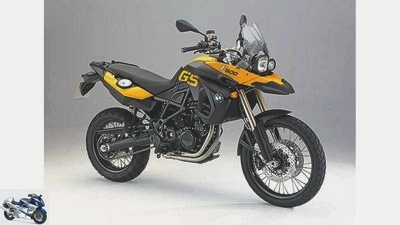
BMW
11/16
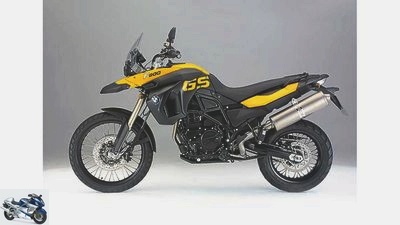
BMW
12/16
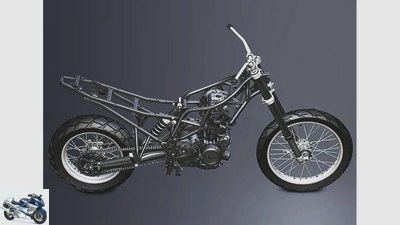
BMW
13/16
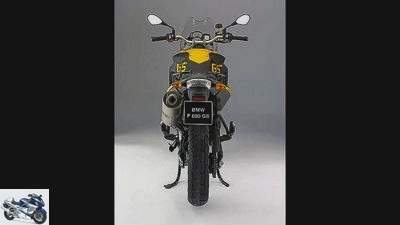
BMW
14/16
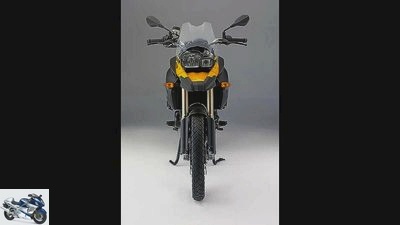
BMW
15/16

BMW
16/16
Driving report BMW F 800 GS
The GS’s little sister
The Bavarians surprise with consistency: Instead of soft compromises, crisp, sporty bikes have recently come from Munich. Like the new F 800 GS. Here are the first driving impressions from South Africa.
The hammer usually falls after a few minutes. After the first few kilometers you will get an idea of whether a motorcycle is okay. If you have to try and analyze for hours, this is usually a questionable sign. So much in advance: With the new one F. We drove 800 GS until dark. But let’s start with the first impression. So go in first gear? by the way, without a “Klong” and take a quick dash down the few kilometers from the hotel near Durban in South Africa to the coast to intensify the phase of getting to know each other. Short sprints, two roundabouts, a few curves and long straights ?? The realization quickly matures that the F 800 GS has all the requirements for an intimate relationship. The part is in a good mood from the first meter. The new mid-size GS is easy to ride, more manageable than its big boxer sister, more stable than many a nervous single. And it’s a crisp-looking enduro that you feel comfortable on straight away.
BMW
A steep career: With the GS, the cylinder bank is almost perpendicular to the housing.
Okay, now it is clear: That fits, this machine is basically completely in order. This leaves the rest of the day to have fun together and take care of the details. The fascinating, subtropical-green landscape and the “Valley of 1000 Hills” marked on the route planner are a real challenge to explore the qualities of the new GS more intensively. Which of course also includes extensive off-road passages. With the choice of wheel sizes, BMW has made a clear statement. While machines like the Transalp, V-Strom or Versys roll up front on road-oriented 19- or 17-inch bikes, the GS signals with its 21-inch front wheel that the ground can also be a little coarser. Bridgestone Battle Wings, an asphalt tire, are fitted as standard. But various rough items are also homologated. The Bridgestone does it for the typical bush slopes, at least in dry conditions. If you can only handle the gas a little, you will get playfully clean drifts out of the corners as well as controlled sliding into the corners. Which speaks on the one hand for a successful chassis geometry, on the other hand an indication of a clean engine setup.
Surprise package
The easy handling and fine steering precision of the GS are surprising. Surprising because the 800 is heavier than a KTM 950 Super Enduro with a nominal 207 kilograms including petrol, but feels more light-footed and more manageable.
Where a KTM pushes over the front wheel, the GS stays clean on course and appears livelier around the steering axis. When things get a little rougher, a decent 215 or 230 millimeters of spring travel offer appropriate reserves. The fork is not adjustable, but with its progressive design it offers a good compromise. Practical that the rebound stage is variable at least on the shock absorber and the spring preload can be easily adjusted using a handwheel. Back on the road that winds in gentle curves over the countless hills. The worst craters and angular bumps make tough demands on the suspension, which masters them with ease. Softly appealing, the design is not excessively tight, so that comfort is not neglected. Even so, the upside-down fork does not penetrate as far as it will go, even with sudden braking. That’s a good thing, because braking is a crucial issue in this densely populated area where life happens on the streets. With the optional ABS, which can be switched off if necessary, the GS is ideally equipped, especially since two floating saddles grip large 300 mm discs at the front.
Driving behavior
As usual from BMW, there are plenty of accessories, from luggage systems to off-road parts.
So you can let it crack when the road is clear. The advantage of the large front wheel: In an inclined position, it stays on course and does not follow every wave. And with its larger diameter it stabilizes, only requires a little force to turn. While you can bend to the right without hesitation, there is a scratching side stand that protrudes unnecessarily far in left turns. The drive is familiar, as it basically comes from the F 800 S / ST (see technical information on page 20). For the enduro, BMW has made the power output more full. The parallel twin with the peculiar boxer sound pulls evenly out of the lower speed range. Obviously it was possible to smooth out the dents in the torque curve of the S / ST. Subjectively, some people probably miss the robust punch that a V-engine, for example, offers. The strength of the 800 clearly lies in the middle.
This is one of the reasons why people prefer to stay there because the twin then runs almost vibration-free. From 5000 rpm vibrations occur, which the lever, struggling in the depths of the engine, cannot really eliminate. Unlike the S-motor that smashes out above, the GS seems a bit strained there. On the gear change? a tiresome chapter for the F 800 S up to the conversion to a rubber-mounted pinion ?? the changeover from belt to chain drive has no effect. The circuit works silently and unobtrusively. The latter also applies to the load change behavior. The twin hangs cleanly on the gas, the transitions from push to load operation run smoothly and without jerks. With the 800 GS, BMW is reviving a segment that used to be strong. Namely the robust enduro all-rounder like an Africa Twin or R 80 GS. Robust, indestructible machines that look good in any environment.
Technology info
BMW
The 800 engine of the F 800 GS runs up and down in unison, igniting alternately.
BMW is actually known for unusual solutions. However, the F 800 GS is a fairly conventional motorcycle, and that is certainly not a disadvantage. Of the 800 road versions, the Enduro ?? apart from the engine ?? little to be taken over. A lattice frame made of steel tubes replaces the aluminum bridge, a two-armed swing arm the one-armed counterpart. The stable off-road backbone remains so narrow in the steering head area that a large steering angle, which is particularly important off-road, is possible. The Sachs shock absorber is supported directly on the swing arm without any leverage and works with travel-dependent damping. A strong 45 mm upside-down fork by Marzocchi bounces and dampens the front. The screwed-on rear frame made of square steel tubes carries the 16 liter tank, so, because of the well-known low consumption of the parallel twin, stages of around 300 kilometers are realistic.
The construction of the 800 series engine is basically unchanged, so the pistons run up and down in unison, as usual, and ignition takes place alternately. The mass balancing is done by a swing arm mounted below the gearbox. In the enduro, however, the cylinder bank had to be set a good 20 degrees steeper to make room for the long suspension travel of the 21-inch front wheel. The head with its ducts and valves remained unchanged, camshafts with changed timing and a new mapping should make the torque curve fuller. The peak output is the same at 85 hp, but is now 7500 rpm, around 500 revs earlier. The maximum torque increased slightly. Because a belt drive would be too fragile in the field, it had to be switched to a chain. This also has the advantage that the translation can be changed more easily.
Data BMW F 800 GS
engine
Water-cooled two-cylinder four-stroke in-line engine, two overhead, chain-driven camshafts, four valves per cylinder, bucket tappets, dry sump lubrication, injection, Ø 46 mm, regulated catalytic converter, 12 V / 14 Ah battery, mechanically operated multi-plate oil bath clutch, six-speed gearbox, O-ring Chain, secondary ratio 42:16.
Bore x stroke 82.0 x 75.6 mm 42:16.
Displacement 798 cc
Compression ratio 12.0: 1
Nominal output 62.5 kW (85 PS) at 7500 rpm
Max. Torque 83 Nm at 5750 rpm
landing gear
Lattice frame made of steel, upside-down fork, Ø 45 mm, two-armed swing arm made of aluminum, central spring strut, directly hinged, adjustable spring base and rebound damping, double disc brake at the front, Ø 300 mm, double-piston floating calipers, disc brake at the rear, Ø 265 mm, single-piston floating caliper.
Spoked wheels with aluminum rims 2.15 x 21; 4.25 x 17
Tires 90 / 90-21; 150/70 R 17
mass and weight
Wheelbase 1578 mm, steering head angle 64.0 degrees, caster 117 mm, spring travel f / h 230/215 mm, seat height 880 mm, dry weight 185 kg, tank capacity / reserve 16.0 / 4.0 liters.
Warranty two years
Colors: yellow / black, silver / black
Base price* 9,640 euros
Additional costs 269 euros
Related articles
-
Driving report WITEC-BMW RC 1100 SC
Driving report WITEC-BMW RC 1100 SC Tiller An unleashed boxer pulls furrows in the ground with elemental force. The WITEC-BMW – always looking for Gaston…
-
Driving report KTM EXC 400-520 Racing
Driving report KTM EXC 400/520 Racing Raise your cups Reason to celebrate? Why, surely. With the 400 and 520 Racing, KTM achieved the coup of this…
-
Driving report KTM 950 Supermoto R
Peuker Driving report KTM 950 Supermoto R R-life Smoothly running engine, first-class chassis, relaxed seating position ?? The 950 KTM proves that…
-
Driving report KTM 1290 Super Duke R
Photo: KTM 23 photos KTM 1/23 There is no competition! Pithy words, but you have to agree with KTM press man Thomas Kuttruf. KTM 2/23 The seat and rear…
-
Driving report KTM LC 4 620e Adventure
Driving report KTM LC 4 620e Adventure Adventurous construction It shouldn’t just be a disguised enduro, not even a rally replica. According to KTM press…
-
Jahn Driving report Bimota DB7 Swift as an arrow Genius and madness ?? Bimotas, which were made before 2000, had both in about equal parts. Today the…
-
Ducati SuperSport in the driving report
Ducati 24 photos Ducati 1/24 The entry into the sporty Ducati world is now again taken over by SuperSport. For the first trial ride, Peter was enough to…
-
Driving report Triumph Tiger 800-800 XC
24 photos triumph 1/24 Triumph Tiger 800: The three-cylinder engine generates 95 hp at 9300 rpm from 799 cubic meters. triumph 2/24 Triumph…
-
Driving report Triumph Tiger 800 XCx and XRx
triumph 31 photos triumph 1/31 triumph 2/31 triumph 3/31 triumph 4/31 triumph 5/31 triumph 6/31 triumph 7/31 triumph 8/31 triumph 9/31 triumph 10/31…
-
Honda X-ADV (2017) in the driving report
Honda 28 photos Ciro Meggiolaro 1/28 Neo-Scooter: Honda is creating a completely new scent trail in the large scooter segment. The X-ADV is said to be…